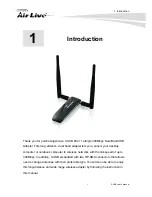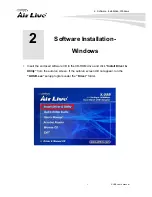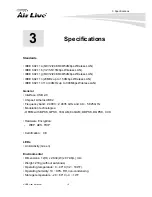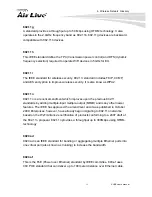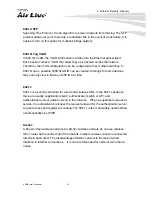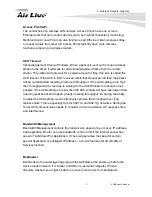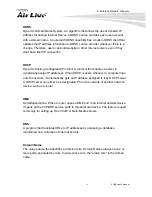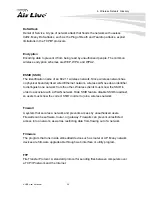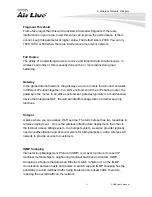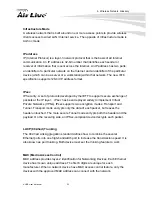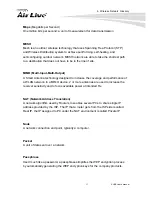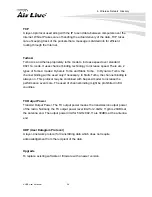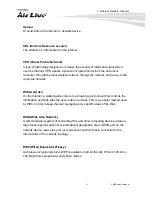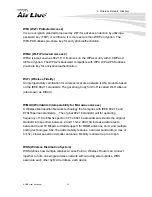
5. Wireless Network Glossary
15
X.USB
User’s Manual
802.11g
A standard provides a throughput up to 54 Mbps using OFDM technology. It also
operates in the 2.4GHz frequency band as 802.11b. 802.11g devices are backward
compatible with 802.11b devices.
802.11h
This IEEE standard define the TPC (transmission power control) and DFS (dynamic
frequency selection) required to operate WiFi devices in 5GHz for EU.
802.11i
The IEEE standard for wireless security, 802.11i standard includes TKIP, CCMP,
and AES encryption to improve wireless security. It is also know as WPA2.
802.11n
802.11n is a recent amendment which improves upon the previous 802.11
standards by adding multiple-input multiple-output (MIMO) and many other newer
features. The IEEE has approved the amendment and it was published in October
2009.
Enterprises, however, have already begun migrating to 802.11n networks
based on the Wi-Fi Alliance's certification of products conforming to a 2007 draft of
the 802.11n proposal. 802.11n provides a throughput up to 300Mbps using OFDM
technology.
802.3ad
802.3ad is an IEEE standard for bonding or aggregating multiple Ethernet ports into
one virtual port (also known as trunking) to increase the bandwidth.
802.3af
This is the PoE (Power over Ethernet) standard by IEEE committee. 803.af uses
48V POE standard that can deliver up to 100 meter distance over Ethernet cable.

